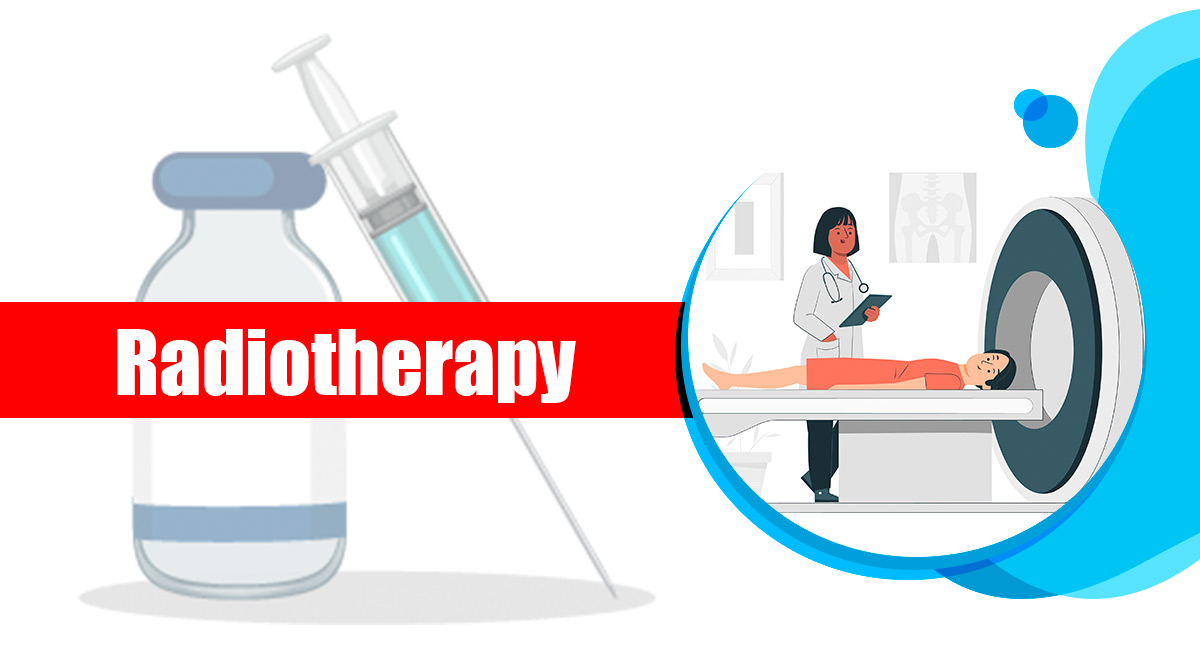The lymph system is a chain of lymph nodes and vessels that transport lymph fluid through the body. Lymph fluids hold infection-fighting WBCs. Lymph nodes act as filters, capturing and killing bacteria and viruses in order to prevent infection from spreading. While the lymph system commonly protects the body, lymph cells called lymphocytes may become cancerous.
Lymphoma is a general phrase for cancer that begins in the lymph system. There are specifically a couple of categories of lymphoma: Hodgkin lymphoma (HL) and non-Hodgkin’s lymphoma (nHL).
Under these categories (HL & nHL), investigators have classified over 70 types of lymphoma. Lymphomas can be responsible for affecting any bit of the lymphatic system, including: bone marrow, thymus, spleen, tonsils, and lymph nodes.
Radiotherapy is a kind of treatment that specifically uses radiation (high-energy X-rays) in order to destroy cancer cells. Radiotherapy has been recommended successfully to treat lymphoma for more than 50-years. Lymphoma cells are absolutely sensitive to radiation; more so than most other sorts of malignant cells, such as breast or lung malignant cells. This helps make radiotherapy an effective treatment option for lymphoma.
Radiotherapy & It’s Mechanism of Action
Radiotherapy delivers radiation to 1 or 2 precise portions of the body. This is totally different from chemotherapy, which moves through the body in the bloodstream. The lymphoma starts when lymphocytes (specialised WBCs) grow disorderly and build up in the lymph nodes as well as other organs. This comes off when lymphocytes split up more often than usual and/or they do not fade when they should.
The high-energy X-rays used in radiotherapy impair cells so that they can no longer split up. Radiotherapy does more harm to malignant cells than it does to healthy cells. Healthy cells can usually repair themselves, whereas malignant cells cannot and they die off.
Aim of Radiotherapy
A few types of lymphoma, typically if they are at an early stage, can be cured with the help of radiotherapy, given with the aim of demolishing all of the lymphoma is known as ‘curative radiotherapy’. For a few individuals, radiotherapy is the solitary treatment that is required. This is most common with lymphomas that are low scale or ‘indolent’ (slow-growing).
Occasionally, radiotherapy is considered for controlling the signs/symptoms (pain or breathlessness). It helps by decreasing the lymphoma size. Radiotherapy prescribed with the aim of easing signs/symptoms is called ‘palliative radiotherapy’.
Radiotherapy is usually recommended following chemotherapy. The combination of chemotherapy and radiotherapy is typically named ‘chemoradiotherapy’.
Through chemotherapy, health specialists destroy the tiny clusters of lymphoma cells that are away from enlarged lymph nodes. Radiotherapy is then prescribed to make sure that the lymphoma is fully destroyed. The specialists target the radiation to enlarged nodes and any nearby portions where they think there is lymphoma.
With the help of radiotherapy, health specialists can stop lymphoma from coming back (relapsing) following the chemotherapy treatment. Research demonstrates that the lymphoma doesn’t usually come back to a portion of the body that has earlier had some radiotherapy.
Types of Lymphoma Treated with Radiotherapy
Radiotherapy is recommended to treat several different types of lymphoma. It is often recommended when lymphoma is detected in just a single or a couple of areas (sites) of the body. It may also be recommended if there was a heavy lymphoma in a single or couple of sites/parts before you had chemotherapy.
Radiotherapy for Hodgkin lymphoma: Patients might be treated through radiotherapy in case they have:
classical Hodgkin lymphoma that is at an early stage: the radiotherapy is usually recommended after a course of chemotherapy. (Adcetris or brentuximab vedotin along with Adriamycin, vinblastine, & dacarbazine).
advanced Hodgkin lymphoma: in case there are a bit enlarged (‘bulky’) lymph nodes.
nodular lymphocyte-predominant Hodgkin lymphoma (NLPHL) that is at an early stage: when radiotherapy solely is the prescribed treatment.
Radiotherapy for non-Hodgkin lymphoma: Radiotherapy is recommended for several types of nHL (non-Hodgkin lymphoma). It is most commonly prescribed for treating high-grade or aggressive nHL such as diffuse large B-cell lymphoma (DLBCL).
Radiotherapy is sometimes prescribed to treat low-grade or slow-growing nHL such as follicular lymphoma. In these cases, it is recommended for lymphomas that have come back but are in just a single portion of the body.
Occasionally, radiotherapy for nHL is recommended on its own. This is typically when the lymphoma is at an initial stage when it is diagnosed.
Usually, radiotherapy for nHL is prescribed together with other existing treatments such as chemotherapy. The chemotherapy is most usually recommended first and the radiotherapy afterwards.
Types of Radiotherapy
Most individuals having radiotherapy for lymphoma will have one of the following:
Involved-field radiotherapy (IFRT): IFRT is used to treat a whole lymph node area, such as the neck or groin. Here is another version of Involved-field radiotherapy, which is involved-site radiotherapy, where radiation is targeted to a tiny portion. Involved-field radiotherapy is usually given when radiotherapy is the sole or the main part of treatment.
Involved-node radiotherapy (INRT): It is used to treat just the affected lymph nodes and a small area around them. Involved-node radiotherapy may be recommended after a complete course of chemotherapy.
The type of radiotherapy you have will mainly depend on the type of lymphoma and the aim of the radiotherapy.
Radiotherapy Planning
- You will have a CT scan (unless your lymphoma is on or near the skin surface).
- A machine named a ‘CT simulator’ uses computed tomography in order to make a detailed 3-dimensional map that indicates where the lymphoma is and the exact parts of nearby tissues and organs.
- Deets from the CT simulator are forwarded to ‘dosimetrists’, who specialise in physics as well as radiation. Through computer software, they work out how best to direct the X-ray beams in order to treat lymphoma while also keeping radiation to nearby parts of the body low. To help in their planning, dosimetrists work within ‘dose constraints’ (limits of radiation that are known to be safe). The oncologist approves the final plan of radiotherapy.
- Marks are made on the skin (unless you are being treated for lymphoma in the head and neck area. A few of these are made through ink, with pens that are like felt-tipped pens. You may also require some permanent marks (tattoos); usually 2 or 3 tiny dots of ink under the surface of the skin. During treatment, the marks are lined up through X-ray beams on the treatment machine in order to make sure the radiotherapy goes to exactly the appropriate place.
- Prior to initiating radiotherapy, you may have a practice or dummy run. This enables the team of radiotherapy to assess the precision of the marks. It also favours you to know what to expect when you go for treatment.

